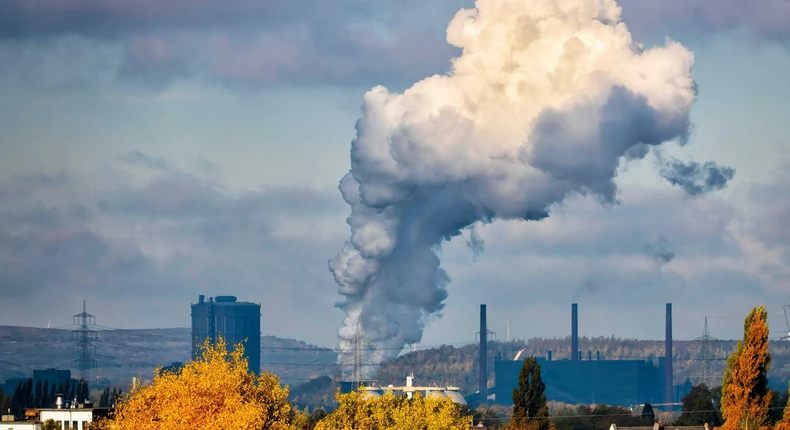ASEAN holds out immense potential for generating carbon credits, given the region’s incredibly rich biodiversity and abundance of renewable energy sources. Member countries should collectively forge commitment and a timeline for implementing regionwide carbon trading.
Carbon credits are a market-based mechanism designed to incentivise the reduction of greenhouse gas (GHG) emissions. They are generated when entities (countries or companies) take specific actions to reduce or remove carbon dioxide and other GHG from the atmosphere. This can be achieved through various means, such as transitioning to renewable energy sources, implementing energy-efficient practices, investing in carbon capture and storage projects, or participating in reforestation and afforestation initiatives.
Once the emission reduction is verified and confirmed typically by independent verification bodies such as Verra or Gold Standard, these entities receive carbon credits, each representing a specific amount of avoided or removed emissions (typically equivalent to one tonne of CO2). These carbon credits can then be traded on the carbon market to other entities that need them to meet their emission reduction targets. This process not only provides financial incentives for sustainable practices but also contributes to global efforts to combat climate change by facilitating the transfer of emission reduction efforts to where they can be most efficiently achieved.
ASEAN holds out immense potential for generating carbon credits, given the region’s incredibly rich biodiversity and abundance of renewable energy sources such as hydro, solar and geothermal. Indonesia, Malaysia and the Philippines comprise three of the world’s 17 megadiverse nations. Yet, the carbon credit system remains elusive. Thus far, ASEAN countries have not attempted to forge a unified timeline or collective commitment for the implementation of carbon trading across the region.
Each ASEAN member country has its own unique political, economic, and environmental considerations, which influence their individual approaches and timelines for implementing carbon trading initiatives. Singapore, the most advanced economy in the region, has taken significant steps in carbon pricing, notably in implementing a carbon tax in 2019 and establishing a state-owned exchange (Climate Impact X) to drive carbon credit trading initiatives. In March 2023, Malaysia followed suit with the establishment of the Bursa Carbon Exchange (BCX) and the launch of an auction platform for carbon credits to prove the viability of carbon credit trading.
Other countries in the region are also venturing into this space. As one of the largest carbon emitters globally, Indonesia faces substantial challenges in curbing emissions. Despite delaying the rollout of a carbon tax citing adverse economic conditions, Indonesia recently announced plans to launch a carbon exchange in the second half of 2023. As of January 2023, Thailand has shown interest in this space and opened up a platform for carbon credit trading (FTIX) aimed at providing domestic exporters with the option of purchasing these credits. Other ASEAN member countries such as Vietnam, Philippines, Brunei, Cambodia and Laos have different levels of readiness when it comes to establishing a carbon platform and have not made solid commitments on this front.
There are many potential benefits ASEAN could derive from carbon credit trading. It has been estimated that the value of carbon credit markets could surge by up to USD $277 billion in investments. The ASEAN region holds almost a quarter of the world’s potential for natural climate solutions with an estimated 58% of threatened forests (about 114 million hectares) in ASEAN being seen as financially viable carbon credit projects. The potential is immense. Proceeds from these projects could be channelled toward spurring investments in renewable energy, energy efficiency, and sustainable practices, thereby fostering the development of green industries while creating new job opportunities within ASEAN.
There are challenges and risks associated with carbon credit mechanisms, as acknowledged by the authoritative Intergovernmental Panel on Climate Change (IPCC). These challenges include integrity in governance, equitable distribution of benefits, potential adverse impacts on competitiveness (compliance may raise prices), and potential negative social and environmental impacts. A recent article by the Guardian, which revealed that more than “90% of rainforest carbon offsets by biggest certifiers are worthless“, has sparked serious debate on “phantom credits”. The possible prevalence of bogus carbon reductions signals that much more needs to be done to address existing limitations.
The challenges must be thought through carefully for carbon credit trading to be effective. ASEAN countries can follow a few steps to establish a robust carbon trading platform. First, it is crucial to construct a regulatory framework for carbon trading. This framework should set clear rules for participation, monitoring, reporting and verification of emissions reduction.Second, the region must set ambitious — but more importantly, accurate — baselines and emission inventories. This requires significant investment in data collection, technology, and capacity building.
Third, collaboration with international organisations and sharing of best practices from more mature carbon markets, such as the U.S. or Europe, can help ASEAN nations adopt standardised methodologies and ensure the integrity and credibility of the carbon credit market. Fourth, the region can start implementing pilot programmes. ASEAN countries that are new to carbon trading could lead with piloting initiatives within selected industries to gauge the effectiveness and efficiency of the system and make necessary adjustments. This was the case with BCX in Malaysia where participants were allowed to test out the trading platform and provide feedback on its usefulness.
Regional collaboration is key to overcoming the challenges in carbon credit trading. ASEAN member states should harmonise their approaches, methodologies, and regulations to facilitate cross-border trading. Sharing experiences, knowledge, and best practices can help accelerate the development of the carbon credit market in this region.

